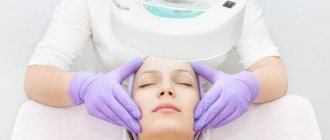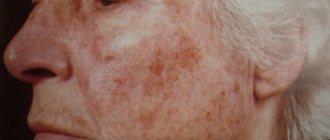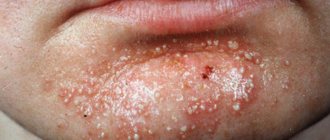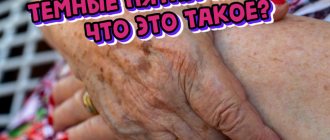Condylomas are one of those problems that force a woman to seek help from a doctor.
There are several types of condylomas, differing according to various authors and classifications.
In addition to violating the natural beauty of a woman, condylomas pose a serious danger.
For women, the appearance of various types of condylomas on the body, especially in intimate places, is a reason to immediately visit a doctor.
This is due to the peculiarities of the development of condylomas.
For men's health, condylomas pose no less danger.
It is necessary to distinguish between different types of condylomas, because they require different treatment methods.
Systemic treatment of condylomas
It is impossible to get rid of condylomas on the skin and mucous membranes once and for all. There is a possibility of their reoccurrence, because the HPV virus continues to be in the patient’s body. There is a risk of self-infection when, during hygiene procedures, neoplasms are injured and new lesions appear on other areas of the skin.
No immunity is developed to HPV, so a patient who has once overcome the virus can become ill with it again if he does not follow preventive measures, in particular hygiene of intimate relationships.
Systemic treatment of condylomas includes the following measures:
- taking antiviral drugs;
- use of immunostimulating medications;
- the use of naturopathic methods;
- the use of topical drugs or surgical methods to remove the tumor.
According to statistics, the probability of relapse after treatment reaches 30%. To avoid them, immunostimulating agents and vitamin complexes are prescribed.
Causes
The cause of anogenital warts is the penetration of the human papillomavirus (HPV) through the skin barrier into the basal layer. Once in a cell, it can be benign, that is, inactive, or malignant when it begins to integrate into the genome.
From the basal layer, the virus moves upward, synthesizing viral proteins along the way. The basal and spinous layers thicken. The cells of the upper layers of condylomas die and become a source of infection.
In a dormant state, the virus does not leave the captured cell and does not synthesize anything. The body's immune system does not allow it to become active. With strong immunity, the virus regresses six months after infection. Such a virus cannot be detected in a laboratory, and it is impossible to infect a partner.
Local treatment of condylomas
The purpose of local therapy is the effect of medications on neoplasms, promoting their death. Effective external remedies include the following:
- Solcoderm is an acid-based medication that can be used at home or in a clinic. The doctor applies the product to the affected area using a spatula to avoid damaging the surrounding tissue. The patient feels a burning sensation and pain. The solution is not washed off, but dries gradually. If used carelessly, scars may form.
- Condilin is a drug based on podophyllotoxin. It is used to treat condyloma and surrounding areas, which are pre-lubricated with cream. Before treatment with the drug, you should consult a specialist. The course of therapy is three days in the morning and evening, followed by a four-day break. You can continue using the medication for up to five weeks.
- Supercelandine is a chemical that cannot be used to treat condylomas on the face. It is applied pointwise to the previously steamed neoplasm and left until dry. The patient feels a burning sensation and possible scarring.
Another effective drug for the treatment of condylomas is Imiquimod.
This is a cream that is applied to the areas where growths occur before bed and left overnight. In the morning, wash it off with warm water and soap. The maximum duration of use of the drug is 16 weeks.
Appearance, localization and symptoms
Most often, condylomas affect the following parts of the male penis:
- glans penis;
- bridle;
- scrotal area;
- urethra;
- the foreskin is closer to the head.
These formations usually look like a mushroom cap (in a reduced form, of course). At the initial stage, it can easily be confused with a regular pimple. In most cases, men ignore the appearance of such formations, naively believing that they are absolutely safe. Indeed, genital warts can be misleading in that they do not itch, do not hurt, and do not bother their owner in any way.
However, as the process progresses, the formations can increase to the size of a large pea, which is difficult to miss. Such condylomas are often injured during sexual intercourse, from body shaving or a washcloth. The most dangerous and unpleasant area of localization is the urethra. Itching, burning and pain during sexual intercourse and urination may already be present here.
Medications
The problem of the formation of skin growths is associated with internal causes - infection of the body with the HPV virus, so external treatment is not enough. To reduce the risk of relapses, injections and anti-condylomas tablets are used.
Medications prescribed to the patient must include antiviral drugs. These include the following:
- Epigen Intim - available in the form of a gel or spray. The latter is applied externally to condylomas or intravaginally. The tube is equipped with two types of nozzles. The drug should be used up to 4 times a day, 1-2 sprays. It can be used to treat and prevent the HPV virus.
- Isoprinosine is an antiviral drug used in the form of tablets, which are taken in a course: two pieces three times a day for two weeks, followed by a 10-day break and a new two-week cycle. The disadvantages of the product include the high cost and a large number of side effects: gastrointestinal disorders, itching, arrhythmia, etc.
- Viferon - available in the form of ointment, gel, rectal suppositories. Combines antiviral and immunomodulatory effects, used in courses of 5-7 days. Contains human interferon, which helps in the targeted fight against HPV.
- Panavir is a Russian-made drug that is used intravaginally, rectally or in the form of injections. It is used in a course of 5-10 days.
For the treatment of HPV, antiviral therapy is complemented by the use of immunomodulatory agents. These include the following:
- Cycloferon is a drug containing interferons and a minimum number of contraindications. The treatment regimen is selected individually, taking into account the results of the PCR test. For example, if a patient is diagnosed with high-oncogenic risk HPV, more intensive therapy is required.
- Polyoxidonium - for the treatment of HPV, rectal suppositories are used mainly, which are prescribed in courses of 10 days. The drug is used 1 time per day, before bedtime.
To eliminate the main manifestations of HPV, naturopathic remedies are used, i.e. medicines based on medicinal plants. As an addition to complex treatment, Malavit (cream based on extracts of herbs, copper, silver), tea tree oil, castor oil, propolis tincture, etc. are used. To increase the body's defenses, the patient is prescribed a complex of vitamins.
Indications for removal
There are the following indications for the treatment of condylomas on the body with surgical methods:
- progression of the problem, in which existing tumors increase in size and new growths appear;
- frequent injury to condylomas due to localization, causing bleeding and inflammation;
- large size of neoplasms, due to which they cannot be eliminated with drug treatment;
- pregnancy (condylomas located on the cervix, in the vaginal area, impede the passage of the fetus and mean a potential risk of vertical infection - transmission of HPV from mother to baby during childbirth);
- physical discomfort associated with the location of neoplasms (for example, during intimacy, urination, defecation, etc.);
- psychological discomfort that growths on the face, neck and other noticeable places cause the patient;
- suspicion that the neoplasm will develop into a malignant form.
If the patient decides to undergo surgical treatment of condylomas, he needs to consult with a dermatologist who will suggest the best way to eliminate them.
Diagnostics
Condylomas are differentiated from molluscum contagiosum, syphilitic condylomas and cancerous processes on the mucous membranes and skin.
Diagnosis of the disease is simple:
- First, a specialist collects complaints and anamnesis, then he examines the mucous membrane of the cervix and vagina, as well as the anogenital area.
- Further, if the doctor has no doubt about the diagnosis, all patients are prescribed a colposcopy to determine flat condyloma, dysplasia, or even cancer.
- A blood test using the PCR method is indicated. This study allows you to accurately determine the type of virus, identify the number of HPV and its oncogenicity.
- A blood test for immunodeficiency virus and syphilis is required. Moreover, the patient’s sexual partner also needs to undergo tests.
- In addition, an analysis is carried out for oncocytology of smears from the cervix, from the cervical canal and from the surface of condylomas.
- If the doctor suspects that the tumor is malignant, the patient is prescribed a biopsy of the suspicious areas.
- If the urethra is damaged, urocystoscopy is performed.
- If there is a suspicion of tumors in the anus, anoscopy is prescribed.
Removal of condylomas
The answer to the question of how to get rid of condylomas is given by a specialist based on the results of an external examination, medical history, and the results of a PCR test. The localization of tumors, the state of a person’s immunity, the presence of concomitant diseases, allergic reactions and contraindications are taken into account.
Experts strongly recommend refraining from attempting to remove warts and papillomas on your own. On the Internet you can find many recommendations on how to carry out this manipulation using thread, scissors or a razor. Such treatment can lead to sad consequences: the development of an inflammatory process, a sharp increase in size of the growth, and its development into a malignant form.
Removal steps
Getting rid of papillomas in various ways occurs according to the following scheme:
- the patient receives a consultation with a dermatologist, during which the method of treatment is agreed upon;
- before the operation he abstains from intense tanning and drinking alcohol;
- during the operation, sits in a special chair;
- local anesthesia is given, manipulations are carried out using a special drug (for example, laser, cryodestructor, etc.);
- A bandage is applied to the treated area and must be worn for 1-2 days.
As a rule, no specific care is required for the treated area. It is enough to avoid applying cosmetics to it, tanning, and refrain from visiting the sauna, bathhouse, or swimming pool for 2-3 weeks. To accelerate tissue regeneration, it is recommended to use healing agents.
Methods for removing condylomas
The decision on how to treat condylomas is made individually. For example, if they are multiple in nature, the patient is recommended to undergo electrocoagulation, if they are located in hard-to-reach places - radio wave destruction, if localized on the face - laser resection.
In some cases, surgical removal is used, i.e. destruction with a scalpel. This method is in demand for eliminating malignant and large tumors.
Laser beam removal
This is a progressive surgical treatment method that is used for tumors of the face and neck, perianal area, and other locations. The wart is exposed to a laser beam, which helps to “evaporate” it.
The duration of the manipulation is 5-7 minutes, the use of anesthesia is at the request of the client. The strength and direction of the laser beam is adjustable, so the likelihood of hitting healthy tissue is close to zero. After the procedure, a crust remains on the treated area, which disappears after a couple of days.
The advantages of the technique are its painlessness, minimal likelihood of relapse, absence of scars after the procedure, short healing time. The downside is that the doctor does not have any biomaterial left to submit for bacteriological examination and rule out the malignant nature of the tumors.
A liquid nitrogen
Using this technique, you can remove condylomas in men and women on the neck, armpit and other places; it is used less frequently on the face. The essence of the method is the effect of low temperatures on the tumor, due to which it “freezes” and subsequently disappears. The duration of the procedure is up to 10 minutes.
Cryodestruction is practically painless, the patient feels only a slight tingling and burning sensation. After the procedure, a bandage is applied to the treated area, which must be worn for 1-2 days. Then, no special care is required for the resection site; if it itches, you cannot rip off the resulting crust.
Cryodestruction leaves a greater likelihood of scars than laser treatment, so it is less often used for cosmetic purposes.
The procedure is contraindicated for pregnant women, those who have inflammatory processes in their bodies, or those who suffer from individual intolerance to cold.
Radiosurgery
One of the effective ways to cure condylomas is radiosurgery. The fight against a skin growth occurs without contact: radio waves are sent to it, under the influence of which the pathological tissues die. The likelihood of scarring is minimal.
Due to its non-contact nature, radiosurgery is often used to eliminate growths in hard-to-reach places: on the mucous membranes, labia, surface of the uterus, in the vaginal area, etc. After the operation, dressings are not required; treating the resection site with an antiseptic is sufficient. The disadvantages of the method include its pain: the use of local anesthesia is mandatory.
Thermocoagulation
To eliminate papillomatosis, thermocoagulation is used (its other name is electrocoagulation) - the effect of electric current on the tumor. Its waves are converted into thermal energy, which destroys the skin growth.
Electrocoagulation is an effective choice for patients with HPV viruses, because it allows you to remove several condylomas in one session, leaves biomaterial for histological examination, is characterized by precise, targeted action and relatively low cost.
Chemodestruction
This is a method that is used primarily to remove genital warts on the genitals, in hard-to-reach places, which makes the use of physical destruction methods impossible. The method is effective for single small tumors.
The doctor determines what drug to cauterize the tumor to ensure its destruction. As a rule, chemical preparations containing acids are used; they are applied pointwise so as not to affect the surrounding healthy tissue.
Why do genital warts recur?
Even if treatment is carried out on time, it does not guarantee against relapse.
The virus can become inactive, but remain in the body.
The reappearance of growths often occurs due to a decrease in protective mechanisms.
Decreased immunity causes the process to spread to intimate places.
When infected with the immunodeficiency virus, genital warts grow faster.
With this disease, giant colonies may appear.
Treatment of patients with HIV requires special experience from the doctor, usually it is surgical.
At the second stage, liquid nitrogen removal technology is used.
Treatment of condyloma with folk remedies
The recipes offered by traditional medicine have two directions of action: eliminating skin tumors and strengthening the body’s immune forces. The first category includes the following:
- Apple juice
To get rid of condylomas, wipe them with a piece of apple 5-6 times a day. The result will appear after a month.
- Celandine juice
Treatment of condylomas with celandine is a recognized folk method of combating neoplasms. To eliminate condylomas, apply juice squeezed from the stems of the plant. It is recommended to repeat the procedure three times a day.
- Garlic
This plant is capable of burning out new growths, causing them to turn black and then fall off. To combat the skin defect, apply a paste of garlic cloves to the growth or lubricate it with freshly squeezed juice.
- Onion
Has an effect similar to garlic. Onion juice is applied to the neoplasm 2-3 times a day. Treatment continues until the growth disappears.
- Kalanchoe
A freshly picked leaf of the plant is applied to the affected area and left overnight. The procedure is repeated until a therapeutic effect is achieved. Instead of Kalanchoe in compresses, you can use gruel from freshly grated potatoes.
- Iodine
Condylomas are lubricated with its pharmaceutical tincture 2-3 times a day.
It is expected that the first improvements will become noticeable after 1-2 weeks of treatment.
The second group of folk recipes is aimed at increasing the body's defenses. For this purpose, ingestion of decoctions and infusions is used. For example, the following effective methods exist:
- A teaspoon of burdock is poured into a glass of boiling water, infused for 2-3 hours, then taken 50 g three times a day.
- Two tbsp. l. lemon balm is brewed in 0.3 liters of boiling water and infused for about an hour. The product should be consumed throughout the day, like tea.
- Marigold flowers (1 tbsp) are brewed with a glass of boiling water and allowed to settle. The composition is taken one spoon in the morning before meals.
Traditional methods have contraindications and cannot be the only way to combat condylomas. It is recommended to consult your doctor before using them.
What do warts in the groin look like in men?
Unlike neoplasms that appear in other places on the human body, a wart in the groin in men has the appearance of a papillary-shaped growth. Doctors gave them the name condylomas. In addition to these, inguinal growths can appear as papules or spots. Condylomas often appear in whole groups, shaped like a miniature rooster comb.
Genital warts typically have a human skin tone and may be white, yellowish, or have a reddish tone.
Medical practice shows that these neoplasms practically do not transform into cancer, only certain strains of HPV provoke the appearance of cancer. It is necessary to get rid of condylomas - this will protect your sexual partner from infection. In addition, such skin formations cause trouble for the wearer, because they can easily be rubbed with clothing or torn off, resulting in a bleeding wound. There have been cases where the growths affect neighboring areas of the skin and grow into a whole crust, which looks repulsive.
Features of treatment of condylomas in pregnant women
If condylomas are found in intimate places in women during pregnancy, the following treatment principles must be observed:
- it begins without delay immediately after diagnosis;
- the examination plan must include the woman’s sexual partner;
- Colposcopic and cytological examination is carried out.
How to deal with condylomas is decided by the doctor based on the results of the examination. If they are large, they can be removed using radio waves or surgery. The laser method is not used because there is a risk of harming the development of the fetus.
In consultation with your doctor, chemical agents can be used to eliminate tumors. These include Solcoderm. Resection helps eliminate the unfavorable consequences of the existence of neoplasms: discharge from condylomas, possible difficulties during childbirth.
Surgical treatment is necessarily accompanied by drug therapy. The expectant mother is prescribed antiviral drugs and immunomodulators; the list of drugs is determined by the doctor, taking into account the duration of pregnancy.
Small condylomas located on the labia cannot be removed.
It is enough to prescribe the patient a course of medications and perform vaginal sanitation.
Types of condyloma on the penis
Of course, the types of viruses that cause warts on the penis in men vary greatly. However, the rashes caused by their entry into the body look the same.
Unfortunately, it is impossible to determine only by the shape or color of the condyloma which strain of the virus is causing it. However, doctors divide condylomas into several types depending on how they look.
On the penis of a representative of the stronger sex the following may be localized:
- typical condylomas of the genital type, which can be found not only on the genitals, but also in the anus
- hyperkeratotic growths are characterized by the fact that they layer on top of each other, forming large conglomerates
- papular or smooth formations are also found in medical practice;
- You can also find flat condylomas, which in appearance resemble a small speck, but upon closer examination it will be clear that they are located under the skin
Read also: Features of rashes associated with sexually transmitted diseases
It is also worth considering that some patients develop endourethral condylomas. In this case, they collect around or inside the urethra.











